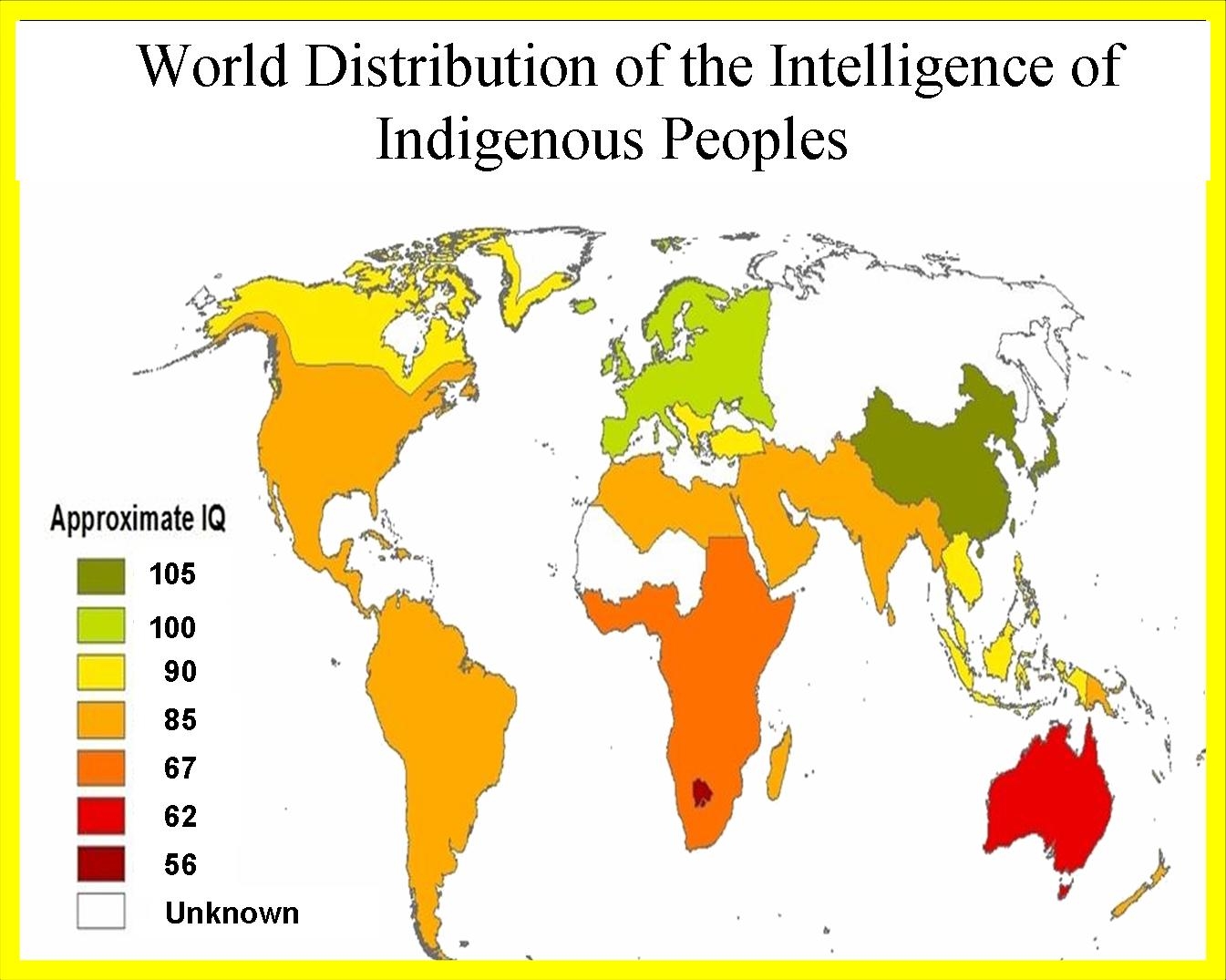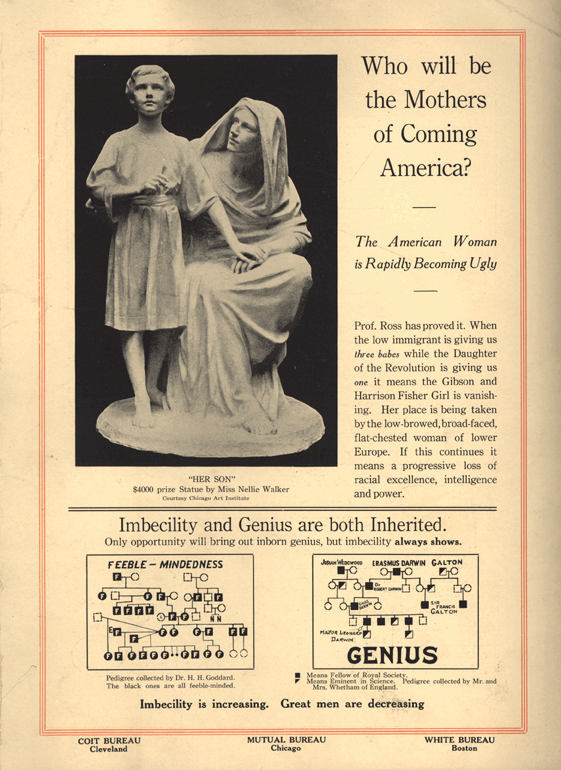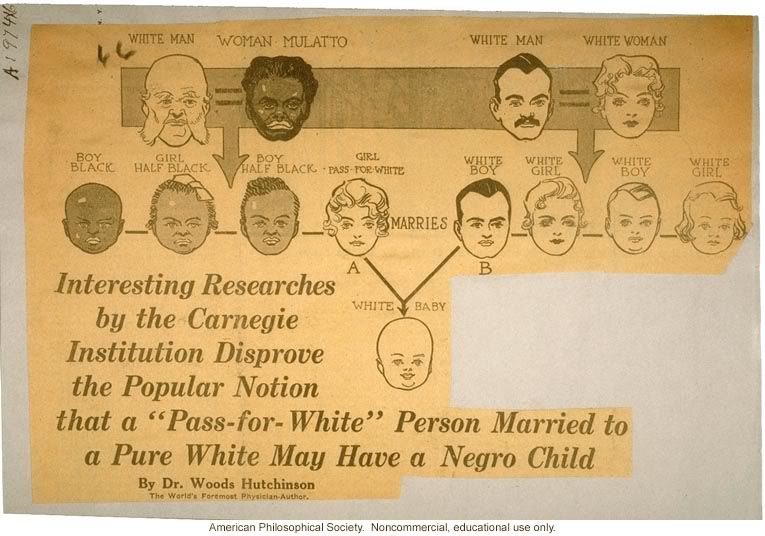Thomas G Blaney
Introduction
Charles Galton Darwin (1887-1962) was singularly well qualified to cut a dash in the history of eugenics. His name alone strikes a unique resonance. He was a grandson of the Charles Darwin. He was a godson of the childless Francis Galton, who in formulating the principles of eugenics had been much inspired by the work of the grandfather Darwin, Galton’s cousin. By heredity and upbringing, C G Darwin was himself a prime example of good breeding: like many of his illustrious forebears, he achieved intellectual eminence and was a striking demonstration that ‘like begets like’. He was a committed eugenist, involved with the Eugenics Society for over thirty years, and its president for six years. Yet despite these credentials, he appears to be almost completely neglected in the historiography of the British eugenics movement. Thus one purpose of this essay is to draw out Darwin’s perspectives on eugenics, and some of the factors that helped shape them.
Darwin’s chronology paralleled that of the British eugenics movement. His eugenic beliefs appear to have been largely formed in times and circumstances that were relatively optimistic for eugenists. However, by the time he came to a leading position in the eugenics movement, the signs of the movement’s final decline were increasingly evident. Darwin was openly torn between two beliefs – that eugenic measures were a crucial necessity as natural selection became largely suspended for much of mankind; and the desperate conclusion that all attempts to create a eugenically-determined world were almost certainly doomed to failure. In the 1950s, when Darwin was most active in the Eugenics Society, the latter was facing a similar crisis of confidence. Thus the second aim here is to demonstrate how Darwin’s views in part exemplified, but often ran ahead of, the increasingly frustrated state of the British eugenics movement in its latter days. For within a year of Darwin’s death, the Society took on charitable status which essentially ended its propagandising role, while in 1968, the Society’s journal, Eugenics Review, ceased publication.1
By the 1950s, the Society had seen a transformation of the social, scientific and political scene since its confident creation as the Eugenics Education Society in 1907. The British eugenics movement had been founded largely on the belief that social class reflected social worth, and that a pauper class, later the ‘social problem group’, was a threat to be reduced and ultimately eliminated. Between the wars, such ‘mainstream’ authoritarian eugenic assumptions came under increasing fire and their political acceptability was further undermined. This resulted from various developments, such as the decline of class divisions; the trend towards more social equality and the impact of left-wing thinking on British politics; greater emphasis on improving social welfare for the mass of the population; and the increasingly widespread acceptance and availability of systematic birth control.2 Moreover, the genetic and social sciences developed much more substantial foundations that undermined or contradicted many of the simplistic assumptions that underpinned eugenics.3 The Society, as the main focus for British eugenics activists, attempted to adapt to changing times, particularly after 1931 under its General Secretary, Dr C P Blacker – the ‘aggressive architect of reform eugenics’.4 There was still a focus on negative eugenic policies, such as the attempts to institute voluntary sterilization in the 1930s. But there were also broader initiatives, such as moves to seek eugenic advance through informed responsible decisions by individual parents about family planning, rather than continuing to assert that artificial birth control was firmly dysgenic. However, by 1939, the Society had essentially failed to have any explicit eugenic impact on social policy developments.5 Yet thanks in large part to the fortuitous financial lifeline of the Twitchin bequest,6 and a hard core of about four hundred supporters,7 the Society survived the second war and even the revelations of Nazi-style eugenics in Germany. As Mazumdar argues, it was only the radical post-war changes in the social climate brought about by the ‘break-up of the Poor Law, and the mentality of the welfare state’8 that finally brought this dinosaur to extinction.
This essay revolves around the views of Darwin and his colleagues in the Eugenics Society. The consulted primary sources have thus concentrated on relevant published papers by Darwin and his contemporaries, and the archives of the Eugenics Society. The archive evidence implies that Darwin kept eugenics out of his professional life as an academic, scientist and civil servant, and records of those aspects of his life have thus been largely ignored. However, some sources have been identified that may add further detail to a more comprehensive study, but which were not consulted: these have been listed in an appendix. A number of more general published accounts of Darwin the man, and about his family, have been used. Private family correspondence would clearly have helped here, but none has been identified in accessible archives. As already noted, there is virtually no detailed secondary literature on Darwin’s place in the history of eugenics.
Nature and nurture in the ‘model family of the eugenics movement’9
Even by the standards of the Darwin-Wedgwood dynasty and the ‘intellectual aristocracy’,10 C G Darwin’s lineage and intellectual credentials were impressive. For example, he became a Fellow of the Royal Society, as had his father, two uncles, grandfather, great-grandfather, two of his great-great-grandfathers, and two godfathers.11 While his father’s forebears carried the ‘Darwood’12 genes, his mother was the daughter of a Philadelphia engineer and inventor and had grandparents related by marriage to the Jebbs, a prominent Cambridge academic family.13 One of Darwin’s sisters married into the Keynes family, Darwin himself married a daughter of a Warden of All Souls, while one of his sons married into the Huxley family – ‘so at last the Darwins and Huxleys are kinsmen’.14 |
Charles
Galton Darwin
(1887-1962) Photograph by kind permission of Edward Darwin |
To some members of his family, he appears to have been regarded as rather reticent,20 but if so, this was hidden behind a much more ebullient public personality. He was described variously as ‘large, both physically and in manner, cheerful and definite’,21 ‘a great booming voice … larger than life’22 and ‘very large and encyclopedic’.23 His confident and positive physical presence led to his colleagues at Christ’s College dubbing him ‘the Chief Sea Lion’.22 Thus by intellect and personality, C G Darwin immediately impressed as someone who lived up to his patrician heritage. Yet to what extent did his peculiar heritage and circumstances shape the eugenic views that he espoused during the final decades of his life?
Darwin was brought up in a family that was known as independent-minded. It was also somewhat obsessed with its own singular history and its eccentricities, if not always without some self-mockery.24 Yet in many respects, Darwin’s upbringing was probably typical of his privileged class and period. In particular, and relevant to eugenic perceptions, the young Darwin and his siblings could hardly escape the prejudices and misapprehensions of being largely isolated from the concerns of the mass of the population. Thus, post-hoc, Darwin’s sister Gwen could not ‘believe that the middle classes of those days ever had the faintest idea of the outlook of the poor’.39
More unusual was the family preoccupation with inherited physical and mental weakness. ‘The worst of my bugbears is heredetary [sic] weakness’, Darwin’s grandfather had recorded,25 reflecting on the sickliness of most of his offspring and the childhood deaths of three of them. With one or two exceptions, all seven of grandfather Darwin’s adult offspring suffered from chronic physical ailments and/or hypochondria. C G Darwin’s father, George, was periodically unwell with digestive problems throughout his life, much as the elder Charles Darwin had been afflicted. That George Darwin ‘took his ill-health seriously’26 cannot have been helped by his father’s request for him to compile statistics – ultimately inconclusive – about the possible hereditary effects of co-sanguinous marriage, of which his parents’ first-cousin marriage was one.27 George’s four offspring seem not to have suffered conspicuous ill-health, but the family history seems to have at least coloured C G Darwin’s attitudes to the eugenically fit. Thus when it came to negative eugenics, he strongly differentiated physical from mental weakness. ‘One sometimes meets people of notably high intellect who feel that they are eugenically unfit for begetting a family on account of some physical disability, such as bad digestion or weak lungs. I maintain that eugenically there is nothing against such a person founding a family’. He argues this on two grounds, both somewhat questionable in logical or genetic terms. First, by ‘the advance of medical science … these organic weaknesses may be largely nullified’. Second, where the latter is not the case, then such physical diseases ‘will gradually eliminate themselves by the earlier death-rate of their victims’.28
On the positive eugenic front, he pointed out that ‘there have been men of pre-eminent ability, risen from the ranks, whose descendants have sunk back in a generation or two, whereas there are families where generation after generation goes on producing men of very good ability’.29 In making this assertion of the existence of a genetic nobility among the intellectually able, his own family can hardly have been far from his mind.
The Chief Sea Lion hesitant: C G Darwin and the Eugenics Society
Like his uncle Leonard,30 Darwin appears to have come to the eugenics movement – or more correctly to have been brought to it – relatively late in his life. He almost certainly had no direct involvement with the Eugenics Society before 1930, when he was in his early forties. However, by then, there was a Darwin family tradition of support for the Society. Apart from Leonard, four of his other five Darwin uncles and aunts had been members, in Cambridge and/or London. His father had apparently given support, and his mother was a member from about 1915.31 |
Dr Carlos
Paton Blacker (1895-1975)
Photograph by kind permission of
Dr John Blacker
|
Following that lecture, he accepted a vice-presidency of the Society, but prudently again sank into inactivity in the Society until his retirement from government service in 1949. In 1951, in writing to Blacker about his imminent book The Next Million Years, he stated ‘that it is part of the policy I adopted not to appear too closely associated with the subject of Eugenics. I hope it [ie the book] will nevertheless leave you feeling I consider it one of the most important things in the world’.36 Now relatively unconstrained, he was happy to join the Society’s Council, and in 1952 was offered the Presidency. He declined, on grounds, inter alia, that if his book, which was about to appear, proved unpopular and attracted violent opposition, it would reflect on the Society.37 However, with considerable flattery, Blacker38 persuaded Darwin to agree to a deferred acceptance, with Carr-Saunders, who had held the office since 1949, extending his Presidency in the interim. Thus in 1953 began Darwin’s most active period in eugenics, as President of the Society.
We can thus see that in many respects Darwin was hesitant and needed persuasion in taking a leading position as a Society activist. Certainly the evidence casts no doubt on his commitment to the principles of eugenics, and he may well have felt a moral and possibly a familial duty to support the Society. However, leaving aside the limitations he felt while in the Civil Service, he clearly had other misgivings. To help understand these, we thus must look at his eugenic beliefs in more detail.
The beliefs of a eugenist who was also a physicist, humanist and fatalist
Francis Galton is considered by many to have been a polymath genius, but something of an over-enthusiastic amateur by his scientific detractors. In contrast, Galton’s godson was almost certainly no genius, but he was a rigorous professional in his scientific career – ‘he was very thorough in his physics’ according to Nobel laureate G P Thomson.40 Yet, as we have already implied, this scientific thoroughness in Darwin the physicist often appeared suspended when it came to Darwin the eugenist. On the one hand, not only was he fully aware that heredity, genetics and social science were exceedingly complex and very poorly understood, but also proclaimed himself an amateur in them. On the other hand, he appeared to accept with little scientific questioning or scepticism some of the traditional eugenists’ shibboleths.Darwin’s eugenic beliefs, at least when expressed on paper, were generally simplistic, and often based on subjective observation or received opinion. For example, on inheritance, he appeared satisfied with an intuitive approach: ‘There is of course by now a lot of fairly deep knowledge about the laws of heredity, but there is no need to think about them, because in fact we all do know that a child is rather more likely to resemble his parents than somebody else’s parents. As to personal appearance this is obvious, but I think most sensible people will agree that it also applies to things like character and intelligence’.41 Yet by the mid-twentieth century, scientific knowledge of genetic science and of the unresolved complexities of nurtural factors made such statements even more questionable than in Galton’s day, at least as a basis for determining social policy and action.42
The Eugenics Society had largely concentrated on negative eugenics issues up to 1939, although Blacker in particular had sought more constructive approaches.43 There was a clear shift towards positive eugenics in the late 1940s and later, a move favoured and encouraged by Darwin. For Darwin, the case for negative eugenics – at least for the feeble-minded – was so intuitively and logically obvious as to almost not require discussion. He persisted with the ill-defined term ‘feeble-minded’ against Blacker’s advice,44 but considered that such people could readily be identified with ‘an easy start … through police records, special schools, slums and so on’.45 He disapproved of improving the lot of such people, for ‘the policy of paying most attention to the inferior types is the most inefficient way possible of achieving perfectibility of the human race’.46 For him, ‘this preoccupation with the weaker members is part of the present menacing trend of political thought which insists on absolute equality’.47 He considered that negative eugenics measures, however necessary to curb degeneration, were, ‘like not sending horses that come last to stud’, of little value in actually improving the human race.48
 |
Charles
Galton Darwin and Dr C P Blacker
Dr Blacker being presented with the Galton medal by Sir Charles Darwin
Photograph by
kind permission of Dr John Blacker
|
Even if we accept that Darwin had moved on somewhat from the crude class-based perspectives of many of the old-school eugenists, it is clear that he viewed the world from an essentially patrician viewpoint, disdainful of the talents of the masses. At times, he took the stance of a patronising authoritarian schoolmaster facing a class of potentially delinquent children. For example, he worried that in an ‘age of leisure’ created in an automated society, most people – ninety percent is cited – do not have the qualities of intellect or character to cope constructively. ‘In the past, those having leisure have tended to be rather above the average in ability and education’ but ‘most of mankind are not fitted by nature for a life of freely chosen leisure, because most would not know what to choose. Something equivalent to the compulsory games of the schoolboy would have to be instituted’.53 Likewise, he was at least prepared to contemplate with academic detachment and logic the thought that future world government, faced with any unapproved population increase in any part of the world, would implement ‘the ultimate sanction … to kill off the excess’.54
While the principles underlying a eugenics-based world seemed relatively clear in Darwin’s mind, identifying practicable eugenic measures that enough of society would accept was much more problematical. He was equivocal about democracy, which he concluded was a ‘fairweather form of government’,55 which ‘will probably be the last system to adopt a eugenic policy at all’.56 Indeed, what society was doing and seemed likely to do in future were profoundly worrying to Darwin. His hopes, frustrations and fears were most aptly demonstrated in his two most prominent eugenics-related projects, which we discuss below.
Project 1: The Next Million Years and the wild animals problem
We have already noted that Darwin half expected his book The Next Million Years57 to generate controversy. In practice, apart from some mixed comments within the incestuous eugenics community, it seems to have been mildly received elsewhere.58 The book is not primarily a eugenics tract although it reveals much about Darwin the eugenist, albeit one who despairs that humankind is innately incapable of a concerted rational approach to its own breeding.The book is a polemic about the ‘Malthusian catastrophe’ that Darwin saw as inevitable. While human intelligence had in recent centuries pushed back the perceived limits to food and other resources, Darwin foresaw the end of such improvements. Human nature, however, meant that Man, overall, would not rationally limit his numbers, so that crises of famine, strife and war would become increasingly the norm. His ‘million years’ referred to the period indicated in the geological record for a new species to evolve, so that Man’s basic nature could not change sufficiently except on this time scale. The Malthusian crises were much closer than this.
Darwin developed lines of thought that had appeared in his 1939 Galton Lecture. One such is that man is a ‘wild animal’, as opposed to a domesticated or tame animal which can be ‘remoulded’ via selective breeding under objective direction by a human master. He poses the issue, intrinsic to the traditional eugenic agenda, that when it comes to controlling human procreation, in quality or quantity, subjective judgements cannot be avoided. He sees the question of the feeble-minded as ‘comparatively easy, since [they] can be regarded objectively by their superiors, and so might become amenable to the same sort of control as is applicable to domestic animals’.59 For the broader population, there is the possibility, in principle, of the most superior group prescribing ‘what marriages were eugenically admissible and how large the consequent families should be’. However, this only pushes the difficulty back a stage, ‘for it leaves unanswered the question who are to [comprise this most superior group] and what principles are to guide them’.60 He concludes that any attempt to control the procreative habits of large sections of the population cannot be sustained for long. However effective individual birth control methods become, there will be some who by creed or natural inclination will seek to have large families. Moreover, with no supportive evidence, he hypothesises that the procreative instinct (not to be confused with the sexual instinct) is a heritable quality, making attempts to limit population numbers futile in the long term. It is notable how frequently he called upon the word ‘instinct’ to represent a mainly irrational impulse, even though he admitted it was an imprecise notion, with unclear contributions from genetic and environmental factors.61
His arguments on the longer-term population issue bear considerable similarity to those surrounding the ‘differential birth rate’ issue of earlier eugenic days. These merge with views on shorter-term pressures, such as the dysgenic effects of birth control. Thus, for example, he was clear that ‘the well-to-do are rather more likely than others to possess hereditary ability … but the more prosperous members of the community are not producing their share of the next generation … The whole thing is a catastrophe which it is now almost too late to prevent …’.62
Darwin warned at the outset of his book that, following his arguments, ‘the consequences … will be found exceedingly depressing by all the political and social standards that are now current’.63 Indeed, after asking what action can now be taken about the future of the human race, he concludes ‘very little indeed … for the simple reason that most human beings do not care in the least about the distant future’.64
Such views, in someone who was about to lead and rally the British Eugenics Society did ruffle a few feathers. Most notably, Frederick Osborn, Secretary of the American Eugenics Society contrasted his own optimistic reformist views with Darwin’s pessimistic old-school attitudes. For example, he cited recent studies in the USA that demonstrated that ‘people at the higher income levels have the most children … the more successful college graduates have more children than the less successful’65 i.e. prosperity and family planning were not necessarily dysgenic. Moreover, he was clear that ‘the vital job of balancing population to resources can be done by family planning by individual couples on a voluntary basis’.66 Darwin, in his riposte, gives no ground, considering that Osborn’s position assumes ‘that reason will inevitably triumph over [selfishness, sentiment and unreasoning impulse], but I cannot persuade myself that there is any evidence for this’.67 There followed a lively correspondence, largely unhindered by any well-founded evidence, regarding the impact of birth control, prosperity, the nature of the procreative instinct, and whether there was any hope for a eugenic outcome.68
Blacker entered the public fray, detecting that Darwin had two voices, that of the humanist and that of the fatalist. He found that Darwin the humanist and eugenist ‘did not wholly ignore what we would like in an ideal world … If Darwin did not hold some such views, he would scarcely now be President of our Society’. Meanwhile Darwin the fatalist was ‘impatient of facile solutions and wishful thinking’, one who allowed for ‘the perversity and folly of mankind’.69 Blacker tactfully concluded that the two voices speaking in the book ‘produced in the end an impression of dialectical harmony’, yet the weight of Darwin’s sombre prognoses belies such an anodyne analysis.
Project 2: Promising Families – Mission Impracticable?
Galton’s early ideas, in Hereditary Genius, and later Noteworthy Families revolved around genealogical identification of families who appeared capable of repeatedly producing exceptionally able, energetic and creative people. Schemes to encourage maximum fertility in such families were highly desirable. This was positive eugenics for a perceived elite which almost by definition was from the upper classes. Blacker, anxious to present a less overtly class-based eugenics, was the primary protagonist of a positive eugenics that set much wider sights. In its widest expression, the idea drew on a Galton notion, incorporated into the Society’s 1909 Statement of Objects, of raising ‘the average quality of our nation to that of its better moiety’.70 An inference from this was that if individuals from this better moiety (half) could achieve procreative domination, this would be eugenically positive. Of course, the primary problem was how to assign an individual to the better or worse moiety.One approach to this intractable problem was some sort of performance test based on the family, and this eventually evolved into the much more restricted idea of the ‘promising family’. This idea – the antithesis to the ‘problem family’ – appears to have been developed initially by Blacker,71 and supported by Carr-Saunders. Starting in 1947, Blacker had attempted to establish the ‘Galton Trust’, a major charitable fund to provide allowances to encourage more children from such families.72 This was formally dropped in 1950, after rebuffs from those who might have been expected to co-operate in the necessary social surveys, but the general idea lived on and was mentioned in the Society’s 1950 Statement of Objects. Basically, such a family has ‘children who are healthy, happy and well-adjusted … noteworthy for their cheerfulness and trustworthiness … and usually for their scholastic ability’. ‘Such children and their parents are … eugenically desirable types’ and measures should be found to aid the parents ‘to attain the maximum fertility they desire’.73 The primary challenge was to set criteria and routes to ‘ascertaining’ such families. Then there was the problem of practicable and effective follow-up implementation measures. Darwin was a founder-member and then Chairman of the Committee set up by the Society to consider these issues, and which met from 1952 to 195674.
A number of ascertainment methods had been considered by Blacker, including pre-marital examination and so-called ‘reproductive efficiency’.75 However, the Committee concentrated mainly on schemes to find the family through the promising child (or children), who would be identified by schoolteachers. As formulated for a pilot study, headmasters would be asked to nominate pupils who demonstrated a mixture of ‘superior qualities’, including, for example, leadership, moral force of character and fellowship, as well as scholastic ability. The relevant parents, if willing, would be interviewed by a social worker and complete a questionnaire about the family circumstances. For a working scheme, Darwin’s Committee wished to see those promising family parents who were limiting their family size for economic reasons being given extra financial support to bring their family to the desired size. The proposed process would be overseen by a local committee of eugenically-minded people. The Society briefly considered using its own funds to provide a pilot scheme of family subsidies, but Darwin recognised this as impractical and favoured only ‘exploration and research’ to promote action ‘by larger institutions or the state’.76 It was suggested that the level of the extra family support would be proportional to the family income, so that cost-effectiveness considerations would give preference to poorer families, with the hope that this would add to the scheme’s political appeal.77
Darwin’s description of the proposals to an educational conference in early 195578 attracted considerable press coverage. Most was blandly factual if occasionally bemused reporting, but a couple of leaders criticised the proposals as ‘“master race” philosophy’ and having an ‘unpleasantly “1984” totalitarian ring’.79
The Committee’s efforts over four years yielded little of consequence. From early on, Darwin, while keen to pursue the idea, was gloomily realistic, writing that he should ‘not be much surprised if it proves that the closer it is looked at the more difficult it is seen to be’. In the same letter to Blacker, he is jestingly ominous; ‘If in the end it proved that nothing on these lines could be done, then I would raise the question whether it would not be right to dissolve the Society!’.80 As with the earlier Galton Trust project, there was considerable difficulty finding educational and other bodies prepared to co-operate in research studies. However, three surveys, involving nomination of children by schools and completion of parents’ questionnaires were carried out. The results, as published,81 indicated about a third of the parents would have liked more children than they had, and up to 40% of these said economics were the limiting factor. However, these desired but unborn children would have raised the relevant family fertilities only marginally above that for the population as a whole. Moreover, one of the surveys was on grammar school children (the others were at primary level) where over 80% of the mothers of the nominated children were over forty and unable or unwilling to have more children.
 |
Charles
Galton Darwin and Dr C P Blacker
At the World Population Conference in Rome in 1954
Photograph by
kind permission of Dr Carmen Blacker
|
Conclusion
Steeped in the lore and peculiar sensibilities of his family, and named as he was, Charles Galton Darwin would have found it difficult to remain indifferent to eugenics. That he took an active role in the eugenics movement relatively late in life, and then only with a degree of prompting, indicates that he was not without uncertainties. We have seen that his doubts were not primarily about the aims of the eugenics cause, in which his views remained relatively constant and more traditional than reformist. His main concern was that human nature, democratic political processes, and the cultural tide towards egalitarianism made increasingly nugatory the search for significant eugenic measures that were socially and politically acceptable.Darwin brought little that was novel to the social, political and scientific thinking within the eugenics movement. It was thus almost certainly Darwin’s name, status and personal style that primarily motivated the Eugenics Society, and Blacker in particular, to seek his prominent involvement with the Society’s activities. We have already noted that Blacker occasionally revealed doubts that Darwin’s pessimism regarding the impotence of eugenics movement and the future of humanity was not fully compatible with the rallying role of a president. Yet it was clear that Darwin was only expressing in a more despairing but perhaps more realistic way some of the difficulties that Blacker saw and had struggled with as much as anyone. In a published 1947 article, Blacker had remarked that ‘the theory of eugenics is impressive and convincing; the practical proposals too often seem to peter out in triviality and futility’.85 Ten years later, in a paper to the Society Council, he blamed the Society’s diminishing membership on the lack of ‘a definite policy [his underlining] which commends itself to potential fellows and members, and in particular those of the younger generation’.86 Yet he had virtually no proposals that seemed likely to transform that situation as well as having practical impact in the hostile or indifferent outside world. The Society’s attempts to accommodate itself to that world were at odds with the instincts, if not the more measured rational deliberations of those with more traditional eugenic views, such as Darwin. By 1961, even for a reform eugenist such as John Baker, a revised statement of the Society’s aims was ‘so feeble as scarcely to be eugenic at all’.87
If Blacker saw clearly the problems, he presented a more optimistic face than Darwin, perhaps reflecting the investment, unlike Darwin, of so much of his professional life to the cause. Blacker’s book, Galton and After, published when he retired from the General Secretary post in 1952, found encouraging features and surmised ‘that Galton, were he alive today, would find grounds for hope’.88 Yet Darwin, reviewing the book, found it ‘hard to avoid the conclusion that, frankly speaking, the more closely the practice of eugenics is examined the more difficult it is all seen to be’.89 As regards the fate of the Eugenics Society as a crusading body, Darwin’s pessimism was justified. The Chief Sea Lion realised that he was swimming against the tide, but unlike some of the other wild animals in his peculiar kingdom, he saw little prospect of the tide turning.
Notes and References
Abbreviation: ESP SA/EUG : Eugenics Society Papers Archive, detailed in the Bibliography.1. For example, Mazumdar (1992), esp. Chap. 5.
2. For example, Soloway (1995), Chaps. 8-12.
3. Kevles (1995), Chaps. 9-13.
4. Soloway (1997), p.54. This article generally reviews the reformist developments much inspired by Blacker.
5. Searle (1979); Macnicol (1989).
6. Soloway (1995), pp.163-164.
7. Eugenics Society papers, L.13: Paper on Future of Eugenics Society by C P Blacker dated 17 February 1957, and Memo. of November 1957 by G C L Bertram. From a peak of 768 in 1932, membership fell to 444 in 1943, rose to 585 in 1948, but was 450 in 1957 and in constant decline.
8. Mazumdar (1992), p. 255.
9. Mazumdar (1992), so termed in the Frontispiece.
10. Annan (1999), Annexe ‘The Intellectual Aristocracy’, pp.304-311. Originally published in Plumb, J H (Ed.) Studies in Social History: A Tribute to G M Trevelyan, London, Longmans, Green and Co. pp. 243-87.
11. The godfathers were Lord Kelvin (William Thomson) and Francis Galton, see Thomson (1963), p. 69.
12. Moore (2001), Chaps 1-2.
13. Keynes (1976), p. 40.
14. Annan (1999), p. 311.
15. Ascribed to Henry Tizard by Thomson (1963), p. 81.
16. Ascribed to unidentified observer in obituary of Darwin in The Times, 2 January, 1963, p.12.
17. Thomson (1963), esp. pp. 70 and 81.
18. ‘My biology is only amateurish’ (Darwin 1939, p.13); ‘My own claims [of knowledge of evolutionary theory] could at best be classed as those of an amateur’ (Darwin 1960a, p.463); see also preface to Darwin (1952a); and ESP SA/EUG C.85, letter from Darwin to Blacker, 3 Nov. 1950.
19. Raverat (1952). Darwin’s sister remarked on the ‘great family likeness’ (p.175) between Darwin’s father and his four brothers, and in particular (p.188) that ‘there were whole realms of thought about which they were entirely ignorant; and yet they, who questioned every scientific statement, would sometimes be content to accept the most superficial views on those other matters’.
20. Keynes (1976), p. 243.
21. Thomson (1963), p. 81.
22. Snow (1982), p. 82.
23. Darwin’s sister Gwen quoted by Spalding (2001), p.209.
24. E.g. Raverat (1952), esp. chaps. 7, 8, 10.
25. Desmond and Moore (1991), p. 399.
26. Raverat (1952), p. 184.
27. Darwin (George Howard)(1875).
28. Darwin (1939), p. 15.
29. Darwin (1952a), p. 138.
30. See, for example, Soloway (1997). Leonard Darwin was 59 and not even a member of the Society when asked to be its president in 1909, probably following a suggestion from Galton.
31. ESP, SA/EUG E.23 and E.6. Darwin’s father was listed as ‘expressing intention to join’ when the Cambridge Branch of the Society was created in 1911, but appears not to have become a full member.
32. ESP, SA/EUG C.85: Letter from L Darwin, dated 6 Nov. 1930 to a Mr Collyer at the Eugenics Society.
33. Elected Life Fellow on 30 Nov. 1930.
34. ESP, SA/EUG C.85, Letter from Darwin to Blacker, June 1938.
35. ESP, SA/EUG C.85: Letter from Darwin to Blacker, dated 14 Feb. 1939.
36. ESP, SA/EUG C.85: Letter from Darwin to Blacker, dated 26 Oct. 1951. Darwin’s association with eugenics is not always mentioned in various biographical pieces about him. His entry in the Dictionary of National Biography (Gowing 1981) notes his interest in eugenics and his presidency of the Eugenics Society, whereas the Royal Society memoir (Thomson 1963) merely notes the latter. However, the Times’ obituary (2 Jan. 1963, p.12) and his sister Margaret’s biographical account (Keynes, 1976, Chap. 25) omit even this.
37. ESP, SA/EUG C.85: Letter from Darwin to Blacker, dated 26 Feb. 1952.
38. ESP, SA/EUG C.85: Letter from Blacker to Darwin, dated 29 Feb. 1952.
39. Raverat (1952), p.102.
40. Thomson (1963), p.82.
41. Darwin (1955a), p.17.
42. See, for example, Kevles (1985), pp.145-7, and Edwards (1997) on the evolution of scientific perceptions of the impact of inheritance on human intelligence and behaviour.
43. Soloway (1995), esp. Chap. 9; Soloway (1997).
44. ESP, SA/EUG C.85, Letter from Blacker to Darwin, dated 31 Oct. 1951, commenting on proofs of The Next Million Years. He found ‘feeble-minded’ an unsatisfactory term, and suggested greater precision e.g. ‘mentally sub-normal’. Darwin continued with ‘feeble-minded’ in the book and later articles.
45. Darwin (1955a), p.18.
46. Darwin (1952a), p. 104.
47. Darwin (1957a), p.77.
48. ESP, SA/EUG C.85, Letter from Darwin to Blacker, dated 8 Oct. 1953.
49. Darwin (1939), p.20.
50. For example, Raverat (1952), p.199.
51. For example, ESP, SA/EUG C.85, Letter from Darwin to Carter, dated 12 Dec. 1959; Darwin (1960a), p.471.
52. ESP, SA/EUG C.85, Letter from Darwin to General Osborn, dated 8 Sept. 1953.
53. Darwin (1956b), p.14.
54. Darwin (1960a), p.473. Thomson (1963, p. 82) remarks that Darwin ‘was keenly interested in social and political problems but with something of the impersonal attitude which is common in professional philanthropists, to whom people seem like flags that denote battalions on a staff map.’ In similar vein, Bertram in his obituary of Darwin (Bertram and Carter, 1963, p.7) remarks that Darwin ‘perceived, perhaps more than some today, that eugenics does truly go beyond human genetics by the addition, to that pure study, of personal and group responsibility and therefore need for action’.
55. ESP, SA/EUG C.85, Letter from Darwin to General Osborn, date 8 Sept. 1953.
56. Darwin (1939), p.21.
57. Darwin (1952a).
58. For example, see Carter (1952); Letters to Eugenics Review, Vol. 46, No. 1, pp. 66-67; anonymous book review ‘The Future of Man’ in Times Literary Supplement, April 4, 1952, p.231. According to Darwin’s sister Margaret (1976, p.250), ‘the book made little impression on the contemporary consciousness’.
59. Darwin (1952a), p.122.
60. Ibid., p.123.
61. For example, Darwin (1954), pp. 74-5: (1956a), p.131; (1960), p.465.
62. Darwin (1952a), pp. 138, 140, 141.
63. Ibid. p.26.
64. Ibid. p.207.
65. Osborn (1953), p.159.
66. Ibid. p.158.
67. Darwin (1953), p.161.
68. Correspondence in Eugenics Review, Vol. 46, No.1, 1954 pp. 66-67; Darwin (1954).
69. Blacker (1954a).
70. Blacker (1954b), p.22.
71. Blacker (1947)
72. ESP, SA/EUG D.77.
73. Blacker (1954b), p.21; ESP SA/EUG L.60, proposal document dated 19 Dec. 1952 by Blacker and Carter.
74. ESP, SA/EUG L.58; L.60.
75. Blacker (1954b), pp. 23-25.
76. ESP, SA/EUG C.85, Letter from Darwin to Blacker dated 8 October 1953.
77. Blacker (1947), p.26.
78. Published as Darwin (1955a).
79. News reports appeared in at least fourteen national and provincial papers and magazines. The quotations given come from the Manchester Evening News of 21 Jan. 1955 and The Schoolmaster dated 7 Jan. 1955, respectively. See press cuttings in ESP SA/EUG D.174.
80. ESP, SA/EUG C.85, Letter from Darwin to Blacker dated 8 October 1953.
81. Carter (1958).
82. ESP, SA/EUG C.85, Letter from Darwin to Carter dated 12 Dec.1959.
83. ESP, SA/EUG L.13, Minutes of 13 Nov. 1958.
84. ESP, SA/EUG C.85, Letter from Carter to Darwin dated 15 Dec.1959.
85. Blacker (1947), p.25.
86. ESP, SA/EUG L.15, Paper dated 17 Feb. 1957 by Blacker to the Council on the Future of the Eugenics Society.
87. Soloway (1995), p.356: ESP, SA/EUG C.13, Memo dated 4 Oct. 1961 by John Baker to the Society Council.
88. Blacker (1952), p.319.
89. Darwin (1952b), p.154.
Bibliography
Primary Sources: Archival Collections
Eugenics Society Papers in the Contemporary Medical Archives Centre, Wellcome Library for the History and Understanding of Medicine, 183 Euston Road, London NW1 2BE. These are grouped under the reference SA/EUG in the catalogue compiled by Lesley A Hall. Archive sub-collections consulted were: –SA/EUG C.85: C G Darwin correspondence 1930-60.
SA/EUG C.185: Julian Huxley correspondence 1937-69.
SA/EUG D.77: Galton Trust 1947-50.
SA/EUG D.174: Promising Families Correspondence 1953-6.
SA/EUG D.175: Promising Families Misc. Papers 1947-59.
SA/EUG E.6: Cambridge Eugenics Society 1933-37.
SA/EUG E.23: Cambridge University Eugenics Society 1911- .
SA/EUG L.13: Council Minutes (Duplicates) 1952-61.
SA/EUG L.15: Council Minutes Appendices 1953-8.
SA/EUG L.23: Executive Committee Minutes 1943-58.
SA/EUG L.58: Promising Families Committee minutes 1952-6.
SA/EUG L.60: Promising Families Committee papers.
SA/EUG N.16: Press Cuttings 1960-84.
Primary Sources: Newspapers
EDINA Index to The Times, 1906-80.The Times (British Library)
Times Literary Supplement 1952-1960 (British Library)
Primary Sources: Published materials
Blacker, C P (1947), ‘Positive eugenics: A proposal’, Eugenics Review, Vol. 38, No.1, pp. 25-26.Blacker, C P (1954a), ‘The Osborn-Darwin symposium’, Eugenics Review, Vol. 46, No. 1, pp. 3-6.
Blacker, C P (1954b), ‘Promising families: elite and moiety eugenics’, Eugenics Review, Vol. 46, No. 1, pp. 21-27.
Carter, C O (1952), ‘New books on eugenics’, Eugenics Review, Vol. 44, No.2, pp. 63-66.
Carter, C O (1958), ‘Three surveys of promising families’, Eugenics Review, Vol. 50, No. 3, 159-165.
Darwin, C G (1939), Positive Eugenic Policy, Galton Lecture to the Eugenics Society on February 16, 1939. In Eugenics Review, Vol. 31, No. 1, pp.13-22.
Darwin, C G (1952a), The Next Million Years, London, Rupert Hart-Davis.
Darwin, C G (1952b), ‘Eugenics: Galton and After’ (Book review), Eugenics Review, Vol. 44, No. 2, pp. 152-54.
Darwin, C G (1953), ‘Comments on General Osborn’s address’, Eugenics Review, Vol. 45, No. 3, pp. 161-64.
Darwin, C G (1954), ‘The Darwin-Osborn Correspondence’, Eugenics Review, Vol. 46, No. 2, pp.73-75.
Darwin, C G (1955a), ‘The ascertainment of promising families’, Eugenics Review, Vol. 47, No. 1. pp. 17-20.
Darwin, C G (1956a), ‘Osborn’s eugenic hypothesis’, Eugenics Review, Vol.48, No.3, 130-132.
Darwin, C G (1956b), ‘The age of leisure’, New Scientist, Dec 27, pp 13-14.
Darwin, C G (1957a), ‘The value of unhappiness’, Eugenics Review, Vol 49, No. 2, 77-79.
Darwin, C G (1957b), ‘The present golden age’, New Scientist, Nov. 21, pp. 16-18.
Darwin, C G (1960a), ‘Can man control his numbers ?’, in Tax, S and Callender, C (Eds.) Evolution after Darwin (The University of Chicago Centennial): Vol. II, The Evolution of Man, Chicago, Univ. of Chicago Press, pp. 463-73.
Darwin, G H (1875), ‘Marriages between first cousins in England and their effects’, Journal of the Statistical Society, Vol. 38, pp. 153-84.
Kupcinet I et al (1960), ‘At Random – A Television Preview’, abbreviated transcription of a discussion between I Kupcinet, S Tax, C G Darwin, J H Huxley, A Stevenson and H Shapley on WBBM-TV, Chicago, Nov. 21, 1959 in Tax, S and Callender, C (Eds.) Evolution after Darwin (The University of Chicago Centennial): Vol. III, Issues in Evolution, Chicago, Univ. of Chicago Press, pp. 41-65.
Osborn, F (1953), ‘The contribution of planned parenthood to the future of America’, Eugenics Review, Vol. 45, No. 3, pp. 155-60.
Secondary Sources
Annan, N (1999), The Dons: Mentors, eccentrics and geniuses, London, Harper CollinsBertram, G C L and Carter, C O (1963), ‘Obituary: Sir Charles Darwin’, Eugenics Review, Vol 55, No.1, pp. 6-8.
Blacker C P (1952), Eugenics: Galton and After, London, Gerald Duckworth and Co.
Edwards, A W F (1997), The Galton Lecture 1997: The Eugenics Society and the development of biometry’, pp. 156-172 in Peel (1997).
Desmond, A and Moore, J (1991), Darwin, London, Michael Joseph/Penguin.
Gowing, M (1981), C G Darwin, entry in Dictionary of National Biography 1961-1970, E T Williams and C S Nicholls (Eds.), Oxford, University Press, pp. 272-74.
Kevles D J (1995), In the Name of Eugenics: Genetics and the uses of human heredity, Cambridge, Mass., Harvard U. P.
Keynes, M E (1976), A House by the River: Newnham Grange to Darwin College, Cambridge, The Bursar, Darwin College.
Macnicol, J (1989), ‘Eugenics and the campaign for voluntary sterilization in Britain between the wars’, Social History of Medicine, Vol. 2, pp. 147-69.
Mazumdar, P (1992), Eugenics, Human Genetics and Human Failings: The Eugenics Society, its sources and its critics in Britain, London, Routledge.
Moore, J (2001), Good Breeding: Science and society in a Darwinian age, Study Guide to Course A426, Milton Keynes, Open University.
Peel, R A (Ed) (1997), Essays in the History of Eugenics, London, Galton Institute.
Raverat, Gwen (1952), Period Piece, A Cambridge Childhood, London, Faber and Faber
Searle, G R (1979), ‘Eugenics and politics in Britain in the 1930s’, Annals of Science, Vol. 36, pp. 159-69.
Snow, P A (1982), Strangers and Brothers: A portrait of C P Snow, London, Macmillan.
Soloway R A (1995), Demography and Degeneration: Eugenics and the declining birth rate in twentieth century Britain, Chapel Hill, University of North Carolina Press.
Soloway, R A, From Mainline to Reform Eugenics: Leonard Darwin and C P Blacker, pp.52-80 in Peel (1997).
Spalding, F (2001), Gwen Raverat: Friends, Family and Affections, London, Harvill Press.
Thomson, G P (1963), ‘Charles Galton Darwin, 1887-1962’ in Biographical Memoirs of Fellows of the Royal Society, Vol 9, 1963, pp.69-85.
APPENDIX 1: Partial Pedigreee of the Darwin, Galton and Wedgwood Families
 |
APPENDIX 2: Charles Galton Darwin – A Chronology
(Bold items directly relevant to eugenics)1887 Born, Cambridge, eldest son of Sir George Howard Darwin FRS, Plumian Professor of Astronomy, and Maud du Puy.
1906-10 Mathematical Tripos student, Trinity College, Cambridge.
1910-14 Schuster Reader in Mathematical Physics, University of Manchester.
1914-18 Royal Engineers, including scientific work on gun-ranging and aircraft sound. Awarded Military Cross, 1917.
1919-22 Fellow and Lecturer, Christ’s College, Cambridge.
1922 Visiting professor, California Institute of Technology.
Elected Fellow of the Royal Society.
1924-36 Tait Professor of Natural Philosophy, University of Edinburgh.
1925 Married Katherine Pember, daughter of F W Pember, Warden of All Souls College, Oxford. (They had five children.)
1930 Elected Life Fellow of the Eugenics Society.
1936-38 Master of Christ’s College, Cambridge.
1938-49 Director of the National Physical Laboratory.
1939 Galton Lecturer, on ‘Positive Eugenic Policy’.
Vice-President of the Eugenics Society.
1942 Awarded K.B.E.
Seconded to Washington as Director of British Office for Anglo-American Scientific Cooperation.
1951-61 Council member of the Eugenics Society.
1952-56 Chairman, Promising Families Committee of the Eugenics Society.
1952 Published ‘The Next Million Years’.
1953-59 President, Eugenics Society.
1960 Advisory Editor, ‘Mankind Quarterly’.
1962 Died in Cambridge.
APPENDIX 3: Other sources, identified but not consulted
Archival SourcesCambridge University: Christ’s College Archive.
Darwin, C G, Miscellaneous correspondence in Medical Research Council archive.
Darwin, C G, Correspondence with Niels Bohr, 1913-45, in Neils Bohr Archive. [Darwin may have discussed eugenics with Bohr.]
Darwin, C G, Letters to O G S Crawford, Ref. MSS Crawford, Bodleian Library. [Crawford was an archaeologist.]
Darwin, C G, Correspondence with A V Hill, Ref. AVHL, Churchill Archives Centre, Cambridge. [Hill was an academic physiologist.]
Darwin, C G, Correspondence with Julian Huxley, Ref. Julian S Huxley papers, Woodson Research Center, Rice University.
Public Record Office: Files may be available covering Darwin’s professional activities at the National Physical Laboratory and in various other public posts including the Foreign Office German Committee, the Colonial Development Committee, the University Grants Committee, British Office for Anglo-American Scientific Corporation, the BBC Scientific Advisory Committee, and the National Committee for Museums and Galleries. However, it is unlikely that any of these will yield information on Darwin’s eugenic interests.
Published primary sources
Darwin, C G (1955b), ‘Energy in the future’ in Eugenics Review, Vol 46, 237.
Darwin, C G (1956c), ‘Forecasting the future’ in N. Z. Sci. Rev., Vol 14, 102.
Darwin, C G (1956d), ‘The time scale in human affairs’ in Man’s role in changing the face of the earth, Chicago, Univ. of Chicago Press.
Darwin, C G (1958a), ‘Population problems’ in Bull. Atom. Scientists, Vol 14, 322.
Darwin, C G (1958b), Problems of world population, Rede Lecture, Cambridge, Univ. Press.
Darwin, C G (1959), ‘Some episodes in the life of Charles Darwin’, Amer. Phil. Soc. Vol 103, 609.
Darwin, C G (1960b), ‘Can man control his numbers ?’, Perspectives in Biol. and Med., p 252.
Darwin, C G, 1961, ‘World Population Charter Day Address, Davis College, California.
Note: Approximately 75 other works on physics topics by Darwin are listed by Thomson (1963).
Dr Tom Blaney is a physicist by training and spent most of his professional career at the National Physical Laboratory, where he was a Corporate Director when he retired in 1998 and this paper constitutes a project undertaken for the Open University course A.426.

























![[Most Recent Quotes from www.kitco.com]](http://www.kitconet.com/images/quotes_special.gif)






Tidak ada komentar:
Posting Komentar